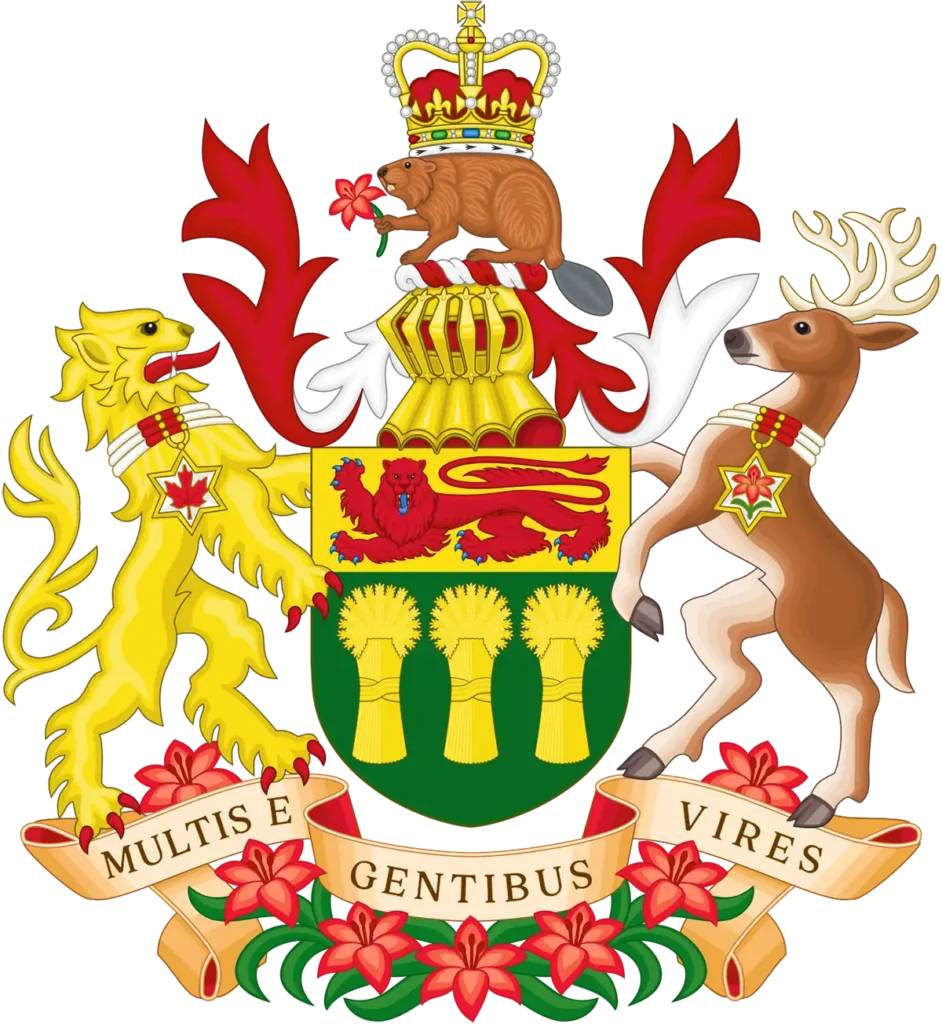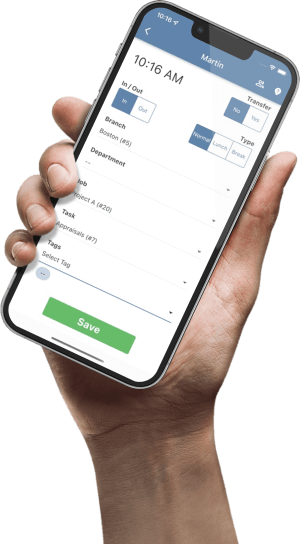Free Saskatchewan Payroll Tax Calculator

How to Use the Saskatchewan Payroll Tax Calculator (Step-by-Step)
Understanding your paycheck is essential, and our Saskatchewan Payroll Tax Calculator simplifies the process. Follow these easy steps to get an accurate estimate of your net pay:
Step 1: Enter Your Location and Filing Status
- Country: Ensure “Canada” is selected. (This is pre-filled.)
- Province/State: Choose “Saskatchewan” from the dropdown menu. (This is pre-filled.)
- Federal Claim Amount: Enter your federal personal amount. This amount affects the amount of federal income tax withheld from your paycheck. (Use your TD1 form as a guide.)
- Provincial Claim Amount: Enter your Saskatchewan provincial personal amount. This amount affects the amount of Saskatchewan provincial income tax withheld from your paycheck. (Use your TD1SK form as a guide.)
Step 2: Input Your Pay Information
- Annual Pay Periods: Select how often you receive your paycheck (e.g., Bi-Weekly (26), Weekly, Monthly) from the dropdown. This is essential for accurate annual calculations.
- Gross Wage/Pay Period: Enter your total earnings before any deductions for the pay period. This is your gross pay.
- Pay Date: Select the pay date using the calendar tool. This is for your reference and does not affect the tax calculations.
Step 3: Calculate Your Taxes
Click the “Calculate →” button.
The calculator will instantly display your estimated:
- Pay Period Section:
- Taxable Income: The portion of your income subject to taxes for the pay period.
- Federal Tax: The estimated federal income tax withheld for the pay period.
- Provincial Tax: The estimated Saskatchewan provincial income tax withheld for the pay period.
- Total Tax: The sum of federal tax and provincial tax for the pay period.
- Annual Section:
- Taxable Income: Your estimated annual taxable income.
- Federal Tax: Your estimated annual federal income tax.
- Provincial Tax: Your estimated annual Saskatchewan provincial income tax.
- Total Tax: Your estimated total annual taxes.
- Pay Period Section:
Step 4: Review and Adjust (If Needed)
- Carefully review the calculated results.
- If you need to make changes, adjust the input fields and click “Calculate” again.
- To start a new calculation with different parameters, click the “New Calculation” button.
Important Notes:
- This calculator provides estimates based on the information you provide.
- Actual tax and deduction amounts may vary based on individual circumstances and additional deductions.
- For precise tax calculations, consult a tax professional or refer to official Canada Revenue Agency (CRA) and Saskatchewan government resources.
- Keep your TD1 and TD1SK forms updated to ensure accurate tax withholding.
Found our Free Saskatchewan Payroll Tax Calculator useful? Bookmark and share it.

Payroll Administration in Saskatchewan
Understanding payroll administration is crucial for both employers and employees in Saskatchewan. Here’s a breakdown of key regulations and requirements:
Payment of Wages
- Employers must pay employees on their regularly scheduled paydays, in Canadian currency, via cheque or direct deposit.
- Monthly salaried employees must be paid at least once a month. Hourly or other wage earners must be paid at least semi-monthly or every 14 days.
- Payment must be made within six days of the payroll cut-off date.
- Upon termination, all outstanding wages (including vacation and banked overtime) must be paid within 14 days of the last day of work. Normal paydays within that period must still be honored.
Earnings Statements (Pay Stubs)
- Employers must provide a statement of earnings (pay stub) with each payment and wage adjustment.
- Required information on the pay stub includes:
- Employee’s name
- Pay period start and end dates
- Regular, overtime, and public holiday hours worked
- Rate(s) of pay
- Amount paid for each category of wages
- Job category
- Total wages/earnings
- Itemized deductions
- Net pay
- Ideally, the employer’s name and address
- Any wages not listed on the pay stub are considered unpaid unless proven otherwise.
- Pay stubs must be detachable from payment vouchers.
- Electronic pay stubs are allowed, provided employees can print copies at work or remotely.
Forms of Payment
- Wages must be paid in Canadian currency, by cheque, or by direct deposit.
Deductions
- Mandatory Deductions:
- Income Tax
- Canada Pension Plan (CPP)
- Employment Insurance (EI)
- Allowable Deductions:
- Pension/RRSP contributions
- Benefit plan contributions
- Charitable donations (voluntary)
- Savings plans/bond purchases (voluntary)
- Union dues
- Court-ordered maintenance payments
- Voluntary purchases from the employer
- Prohibited Deductions:
- Deductions for alleged theft, damage, poor work, or customer non-payment (without a court judgment).
- Requiring employees to return wages.
- Requiring employees to purchase employer goods/services as a condition of employment.
Uniforms and Special Clothing
- Employers requiring uniforms or special clothing must provide them at no cost, including laundering and repairs for certain industries (restaurants, hotels, etc.).
- Normal business attire (e.g., black pants and a white shirt) is not considered a uniform.
Payroll Records
Employers must maintain detailed payroll records for all employees, including:
- Employment contracts/letters of offer
- Wage and benefit details
- Employee name and address
- Job description
- Employment start and end dates
- Hours worked
- Pay rates
- Total wages paid
- Vacation and public holiday details
- Deduction records
- Shift schedules and modified work arrangements
Records for Home-Based Employees
- Home-based employees are covered by employment standards.
- Employers must keep records of the home work address and portion of work done at home.
- Self-employed individuals without employees working from home are not covered.
Record Retention
- Records for current employees: last five years.
- Records for former employees: two years after termination.
- Modified work arrangement agreements: five years after they end.
Contact Information
- Canada Revenue Agency (CRA):
- Online: canada.ca
- Toll-free: 1-800-959-5525 (Income Tax, T4 slips, EI, CPP)
- Service Canada:
- Online: canada.ca
- Toll-free: 1-800-206-7218 (Record of Employment – ROE)
Timesheets and Record Keeping in Saskatchewan
Timesheets are a vital communication tool for employers and employees, ensuring accurate pay and meeting legislative requirements. Detailed time records help prevent misunderstandings regarding hours worked.
Records must include all time employees are required or permitted to work and are at the employer’s disposal, including hours and partial hours.
Essential Information for Timesheets:
Basic Employee Information:
- Employee Name: Full legal name.
- Position: Job title.
Date and Time Details:
- Date: Specific date for each entry (e.g., daily entries).
- Day of the Week: Corresponding day (e.g., Monday, Tuesday).
- Start Time: Time work begins.
- End Time: Time work ends.
- Meal Break Start/End Time: Times of meal break start and end (employees working 5+ hours must receive at least one 30-minute unpaid meal break).
- Total Time Worked: Daily and weekly total work hours (excluding breaks).
- Overtime: Hours exceeding standard workday/week qualifying for overtime.
Additional Information (Optional):
- Illness or Injury Time Off: Time taken due to sickness or injury.
- Vacation Time: Time taken for vacation.
- Public Holiday Pay: Time worked on a public holiday.
- Notes/Comments: Additional details (e.g., overtime reasons, unusual shifts).
Approval Section:
- Employee Signature: Employee verification of hours worked.
- Supervisor Signature: Supervisor approval of hours worked.
- Date of Approval: Date of supervisor approval.

Employee Timesheet
Work Hours
| Date | Day | Start Time | End Time | Meal Break Start | Meal Break End | Total Time Worked | Overtime |
|---|---|---|---|---|---|---|---|
| (Enter data here) | |||||||
Additional Information
Notes/Comments:
Approval

Minimum Wage, Reporting for Duty Pay, and Wages in Saskatchewan
Definition of Wages
Wages encompass all forms of compensation earned for work or services, including:
- Salary
- Commissions
- Overtime pay
- Public holiday pay
- Vacation pay
- Pay in lieu of notice for layoff or termination
- Performance pay or bonuses based on sales, income, profits, or production (e.g., flat rate, piece rate, percentage of transport load) when part of the employment contract.
Minimum Wage
- Effective October 1, 2024, the minimum wage in Saskatchewan is $15 per hour.
- Most employees must be paid at least the minimum wage for each hour or part of an hour they are required or permitted to work, or are at the employer’s disposal.
- Minimum wage adjustments typically follow an indexation formula and are announced by June 30, taking effect on October 1 of the same year.
Exemptions from Minimum Wage
Certain employees are exempt from minimum wage requirements:
- Farming, ranching, or market garden laborers.
- Some care providers employed in private homes.
- Babysitters (temporary or sporadic).
- Athletes engaged in their athletic endeavors.
- Volunteers for non-profit organizations.
- Individuals with physical or mental disabilities working in educational, therapeutic, or rehabilitative programs at non-profit organizations or institutions.
It’s crucial to consult the legislation or Employment Standards for detailed information on these limited exemptions.
Payment of Wages Regulations
- Employees must be paid total wages in accordance with their employment contract or collective agreement, but no less than the standards set by The Saskatchewan Employment Act.
- Employment contracts or agreements cannot provide less favorable terms than those mandated by The Saskatchewan Employment Act.
- Employees must be paid for all time they are required or permitted to work, including time spent in work-related meetings and time spent preparing for or closing after a shift.
Reporting for Duty Pay
- Most employees who physically report to work away from home are entitled to reporting for duty pay, a minimum payment.
- If an employee works less than three hours, they must still be paid for three hours at their regular hourly wage.
- Example: An employee earning $15/hour called in for two hours must be paid $45.
- Example: An employee scheduled for work, and not informed of the cancellation, that earns $20 per hour, that reports to work, must be paid $60.
Reporting for Duty Pay and Overtime
- Reporting for duty pay rules do not apply to overtime.
- Employees called in for overtime are paid their overtime rate for each hour worked.
- Example: An employee earning $15/hour called in for one hour of overtime receives $22.50 ($15 x 1.5).
Reporting for Duty Pay and Public Holidays
- Regular reporting for duty pay rules apply on public holidays.
- Employees receive the higher of reporting for duty pay or wages for hours worked at the public holiday rate (1.5 times their hourly wage).
- Example: An employee earning $15/hour working one hour on a public holiday receives $45 ($15 x 3). If they work three hours, they receive $67.50 ($15 x 1.5 x 3).
Exceptions and Special Rules for Reporting for Duty Pay
- Students working within the school term, school bus drivers, and noon hour supervisors employed by school boards receive a minimum of one hour’s pay at their hourly rate.
- Example: A student earning $15/hour working 30 minutes gets $15; for two hours, they get $30.
- Regular reporting for duty pay rules apply to these employees during school breaks and vacations and to post-secondary students year-round.
Reporting for Duty Pay and Layoff/Termination
Employees required to report to work to receive layoff or termination notices are entitled to reporting for duty pay.
Benefits for Part-Time Employees in Saskatchewan
Employer Obligations
Employers with 10 or more full-time equivalent employees who offer benefits to full-time staff must extend comparable benefits to eligible part-time employees.
Eligible Benefit Plans
Eligible benefits include:
- Dental plans
- Group life insurance
- Accidental death or dismemberment plans
- Prescription drug plans
Eligibility Requirements and Start Dates
Part-time employees become eligible for these benefits when:
- They have been continuously employed for 26 weeks and have worked at least 390 hours within that period.
- After the initial qualifying period, they work at least 780 hours in each subsequent calendar year.
- They meet any additional qualifying periods specified by the individual benefit plan, from their date of hire.
- They are not full-time students.
Comparability of Benefits
- Part-time managerial employees must receive benefits comparable to those provided to full-time managers.
- Part-time non-managerial employees must receive benefits comparable to those provided to full-time non-managerial employees.
Student Eligibility
- Full-time students are not eligible for these benefits.
- A full-time student is defined as someone enrolled in 60% or more of a full course load at a recognized educational institution.
Maintaining Eligibility
- To maintain eligibility, part-time employees must work at least 780 hours in a calendar year.
- Employees on maternity, adoption, or parental leave maintain their eligibility if they would have worked 780 hours had they not taken the leave.
Notification of Loss of Eligibility
- Employers must provide written notification to employees who are about to lose their benefit eligibility.
Benefit Levels
- Part-time employees working 15 to 30 hours per week receive 50% of the benefits provided to comparable full-time employees.
- Part-time employees working 30 or more hours per week receive 100% of the benefits provided to comparable full-time employees.
- If benefit levels are calculated via annual earnings, the same formula must be used for part time workers.
- Dental and drug plans offered to part-time employees must be “basic plans”.
- Except for drug plans, employers can offer employee-only coverage, excluding spouses and dependents.
Contribution Determination
- Employee contributions must be determined and paid in the same manner as those for full-time employees, proportional to the level of benefits received.
Employees in Multiple Bargaining Units
- Part-time employees should receive the same benefits as full-time employees within their respective bargaining unit.

Other Canadian Payroll Tax Calculators
Loading calculators based on your location…
Disclaimer: The content provided on this webpage is for informational purposes only and is not intended to be a substitute for professional advice. While we strive to ensure the accuracy and timeliness of the information presented here, the details may change over time or vary in different jurisdictions. Therefore, we do not guarantee the completeness, reliability, or absolute accuracy of this information. The information on this page should not be used as a basis for making legal, financial, or any other key decisions. We strongly advise consulting with a qualified professional or expert in the relevant field for specific advice, guidance, or services. By using this webpage, you acknowledge that the information is offered “as is” and that we are not liable for any errors, omissions, or inaccuracies in the content, nor for any actions taken based on the information provided. We shall not be held liable for any direct, indirect, incidental, consequential, or punitive damages arising out of your access to, use of, or reliance on any content on this page.
Trusted By
Trusted by 3.2M+ Employees: 21 Years of Service Across Startups to Fortune 500 Enterprises
Join our ever-growing community of satisfied customers today and experience the unparalleled benefits of TimeTrex.










Strength In Numbers
Join The Companies Already Benefiting From TimeTrex
Time To Clock-In
Start your 30-day free trial!
Experience the Ultimate Workforce Solution and Revolutionize Your Business Today
- Eliminate Errors
- Simple & Easy To Use
- Real-time Reporting

Saving businesses time and money through better workforce management since 2003.
Copyright © 2025 TimeTrex. All Rights Reserved.
